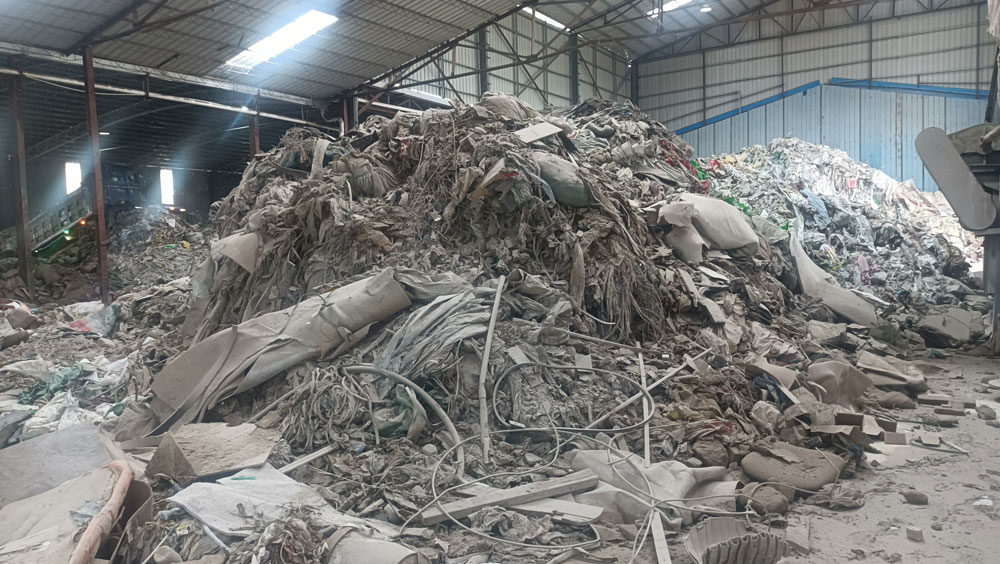 Time:2025-01-06
Time:2025-01-06
 Source:青绿环境
Source:青绿环境
With the acceleration of urbanization, the construction industry is booming, but it also generates a large amount of construction waste. Construction waste mainly includes various types of waste produced during the construction process, such as concrete, bricks, wood, metal, and plastic. If these wastes are not properly managed, they will have a series of negative impacts on the environment and society.

Firstly, a large amount of untreated construction waste occupies valuable land resources. Illegal dumping has become a common phenomenon around many cities, leading to a reduction in available land and affecting the sustainable development of cities. Moreover, some temporary storage sites lack effective management and protective measures, which can easily lead to soil erosion and soil pollution.
Secondly, harmful substances in construction waste may seep into groundwater, threatening the safety of drinking water sources. For example, paints and asphalt contain heavy metals and other toxic chemical components. These substances can release pollutants during rainwater runoff or natural degradation, affecting the quality of groundwater and posing health risks to residents.
Furthermore, the arbitrary of construction waste can also damage the urban appearance and affect the cleanliness and aesthetics of the city. Piles of debris not only mar the view but can also become breeding grounds for pests and diseases, which is detrimental to public health.
Lastly, from a socio-economic perspective, unreasonable disposal methods increase the management costs for governments and enterprises. The expenses for cleaning and transportation are significant, and the lack of effective recycling channels leads to the waste of valuable building materials, which is undoubtedly a great waste of natural resources.
Resource Utilization of Construction Solid Waste
In the face of these challenges, achieving the resource utilization of construction solid waste is one of the key solutions. Through scientific planning and technological innovation, construction waste can be effectively transformed into recycled resources, reducing environmental pollution and creating economic benefits.
On the one hand, strengthening policy guidance and support is crucial. Governments should formulate and improve relevant laws and regulations, clarify the responsibilities of all parties, and provide incentives such as financial subsidies and tax preferences to encourage enterprises to actively participate in construction solid waste resource utilization projects. At the same time, it is necessary to establish and improve market access systems to ensure the healthy development of the industry.
On the other hand, technological innovation is the core driving force for improving resource utilization rates. For example, using advanced crushing and sorting equipment can separate different types of construction waste for processing; recyclable materials can be processed into new building materials and reintroduced to the market. Currently, there are already various environmentally friendly building materials on the market, such as pavers made from waste concrete and composite panels made from recycled wood.
In addition, raising public awareness is also important. It is necessary to widely carry out educational and publicity activities to popularize the knowledge of construction waste resource utilization, so that all sectors of society recognize the importance of this initiative and create a good atmosphere for everyone to participate together.
In summary, the hazards of construction waste should not be underestimated. However, by actively taking measures to promote its resource utilization, we can not only reduce environmental pressure but also inject new vitality into economic and social development. In the future, we look forward to seeing more successful cases emerge and contribute to building a beautiful China.













 Prev
Prev











